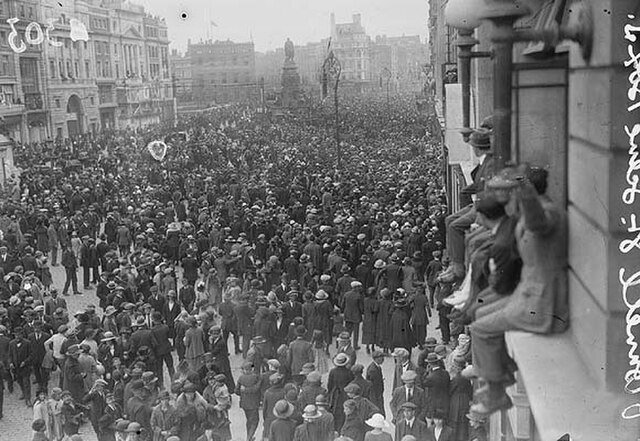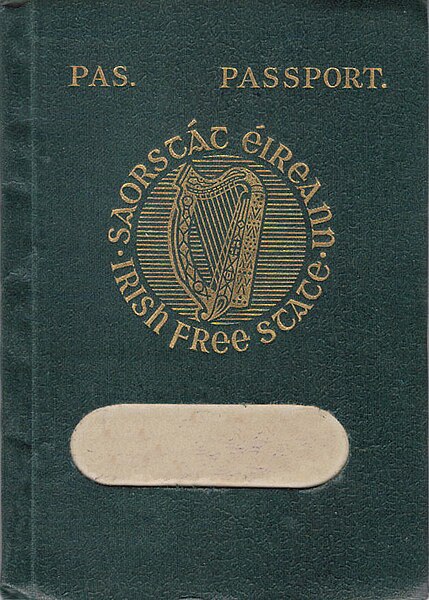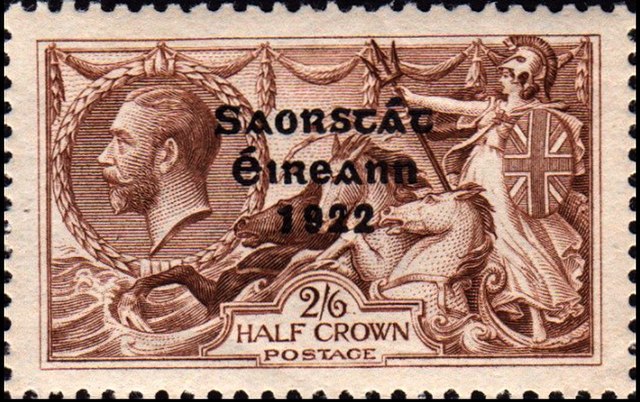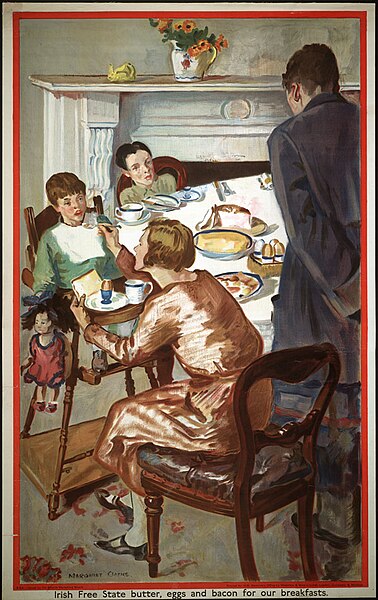Irish head of state from 1922 to 1949
The state known today as Ireland is the successor state to the Irish Free State, which existed from December 1922 to December 1937. At its foundation, the Irish Free State was, in accordance with its constitution and the terms of the Anglo-Irish Treaty, governed as a constitutional monarchy, in personal union with the monarchy of the United Kingdom and other members of what was then called the British Commonwealth. The monarch as head of state was represented in the Irish Free State by his Governor-General, who performed most of the monarch's duties based on the advice of elected Irish officials.
Leinster House, decorated for the visit of King George V and Queen Mary in 1911; within a decade, it became the seat of the Oireachtas (Irish Free State)
Image: King George 1923 LCCN2014715558 (cropped)
Image: HRH The Prince of Wales No 4 (HS85 10 36416)
Image: King George VI LOC matpc.14736 (cleaned)
The Irish Free State, also known by its Irish name Saorstát Éireann, was a state established in December 1922 under the Anglo-Irish Treaty of December 1921. The treaty ended the three-year Irish War of Independence between the forces of the Irish Republic – the Irish Republican Army (IRA) – and British Crown forces.
Funeral procession of Michael Collins, Dublin, 1922
Irish Free State passport (holder's name removed)
Overprinted stamp
Poster promoting Irish Free State farm goods for breakfast to Canadians ("Irish Free State butter, eggs and bacon for our breakfasts")








